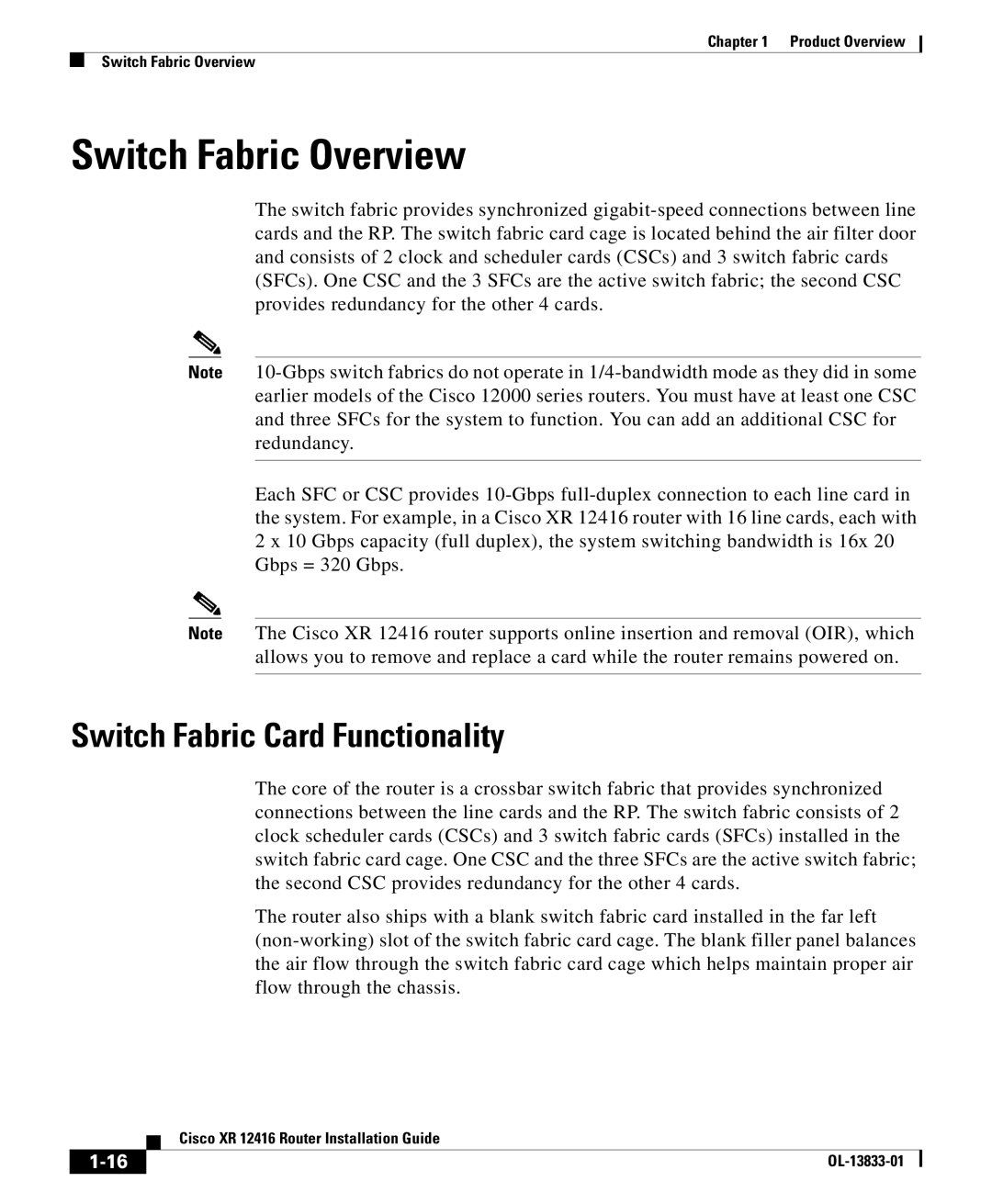Chapter 1 Product Overview
Switch Fabric Overview
Switch Fabric Overview
The switch fabric provides synchronized gigabit-speed connections between line cards and the RP. The switch fabric card cage is located behind the air filter door and consists of 2 clock and scheduler cards (CSCs) and 3 switch fabric cards (SFCs). One CSC and the 3 SFCs are the active switch fabric; the second CSC provides redundancy for the other 4 cards.
Note 10-Gbps switch fabrics do not operate in 1/4-bandwidth mode as they did in some earlier models of the Cisco 12000 series routers. You must have at least one CSC and three SFCs for the system to function. You can add an additional CSC for redundancy.
Each SFC or CSC provides 10-Gbps full-duplex connection to each line card in the system. For example, in a Cisco XR 12416 router with 16 line cards, each with 2 x 10 Gbps capacity (full duplex), the system switching bandwidth is 16x 20 Gbps = 320 Gbps.
Note The Cisco XR 12416 router supports online insertion and removal (OIR), which allows you to remove and replace a card while the router remains powered on.
Switch Fabric Card Functionality
The core of the router is a crossbar switch fabric that provides synchronized connections between the line cards and the RP. The switch fabric consists of 2 clock scheduler cards (CSCs) and 3 switch fabric cards (SFCs) installed in the switch fabric card cage. One CSC and the three SFCs are the active switch fabric; the second CSC provides redundancy for the other 4 cards.
The router also ships with a blank switch fabric card installed in the far left (non-working) slot of the switch fabric card cage. The blank filler panel balances the air flow through the switch fabric card cage which helps maintain proper air flow through the chassis.
| Cisco XR 12416 Router Installation Guide |
1-16 | OL-13833-01 |

